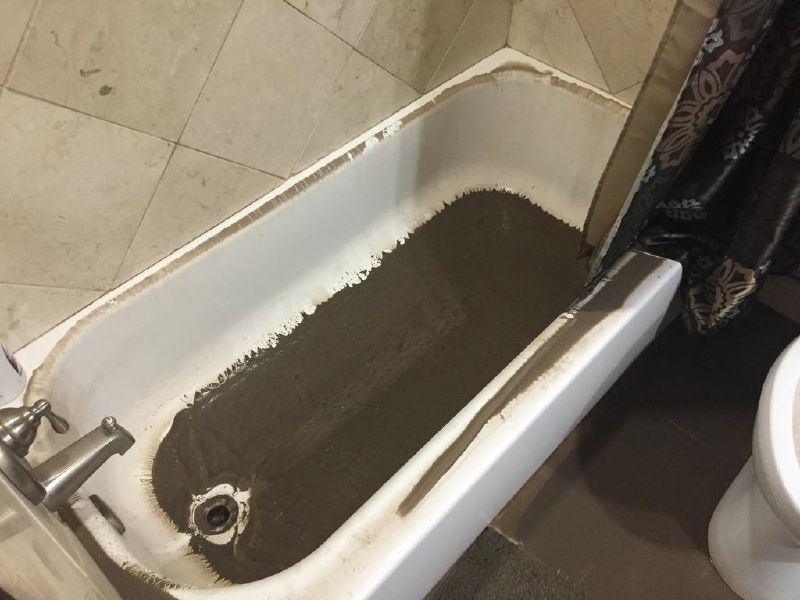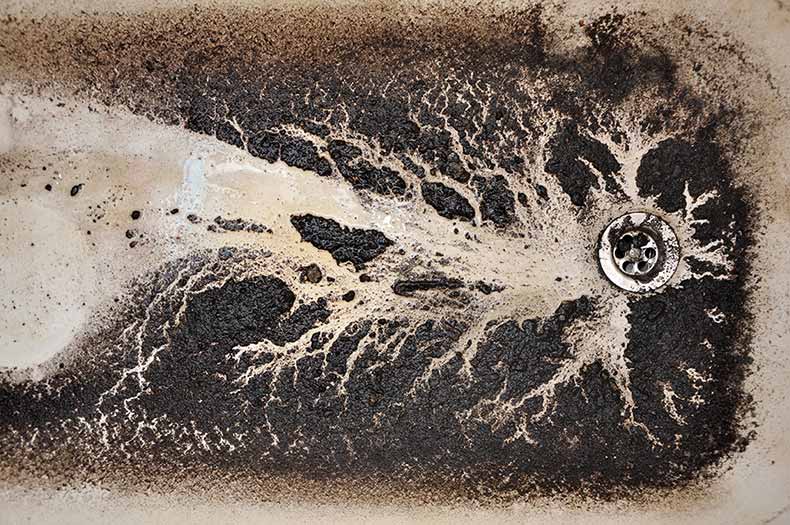Exploring the Causes of Effluent Backflow in the Bathtub
Exploring the Causes of Effluent Backflow in the Bathtub
Blog Article
On this page on the next paragraphs you will discover additional worthwhile details regarding Why sewage is coming up through your bathtub.

Sewer back-up in the bath tub can be a distressing and unsanitary trouble for any kind of home owner. Not just is it bothersome, however it also poses significant health and wellness risks and shows underlying problems with the plumbing system. Comprehending why sewer is turning up through the tub is vital for taking appropriate activity to address the issue effectively.
Introduction to the Concern
Understanding the Issue
When sewer starts backing up right into the bath tub, it's a clear indication of an issue with the drain system. The wastewater that should be flowing far from your home is instead finding its back into your living space, which can result in considerable damages and carcinogen.
Possible Reasons
Numerous factors can contribute to sewage backup in the bath tub. From blockages in the sewer line to issues with the plumbing facilities, identifying the root cause is vital for discovering a service.
Typical Factors for Sewage Backup
Blockages in the Sewer Line
Among the most common reasons for sewer back-up is a blockage in the sewer line. This can happen due to the build-up of debris, oil, or foreign items in the pipelines, preventing appropriate flow and triggering sewer to back up into your tub.
Tree Root Invasion
Tree origins seeking dampness and nutrients can infiltrate drain lines via small splits or joints. Over time, these roots can expand and increase, triggering substantial damage to the pipelines and bring about sewer backup problems.
Aging Framework
Older homes may have obsoleted plumbing systems that are more susceptible to corrosion, cracks, and damage. As pipes age, they end up being extra vulnerable to leaks and obstructions, boosting the possibility of sewer backup cases.
Heavy Rainfall or Flooding
Throughout durations of heavy rainfall or flooding, the sewer system might come to be overwhelmed with excess water, causing backups and overflows. This can cause sewage supporting into bathtubs and various other components inside the home.
Health Threats Related To Sewage Backup
Contamination of Supply Of Water
Sewer backup can infect the water system in your home, presenting a serious wellness threat to you and your family. Direct exposure to contaminated water can cause intestinal concerns, skin infections, and various other ailments.
Spread of Disease
Sewer has unsafe bacteria, infections, and bloodsuckers that can cause a range of conditions, including hepatitis, cholera, and gastroenteritis. Entering into contact with sewer or polluted surfaces places you at risk of infection.
Mold Growth
Moisture from sewage back-up can develop excellent conditions for mold growth in your home. Mold and mildew spores can exacerbate respiratory system troubles and trigger allergic reactions in sensitive people, making punctual clean-up necessary.
Signs of Sewer Backup
Foul Odors
Unpleasant smells originating from drains or components, particularly in the bathroom, might indicate sewer backup issues. These odors are frequently solid and consistent, signifying an issue that calls for prompt focus.
Slow Draining Fixtures
Bathtubs, sinks, and commodes that drain slowly or otherwise whatsoever could be experiencing sewer backup. If several fixtures are impacted all at once, it's most likely that the problem stems from an usual factor, such as the primary sewage system line.
Gurgling Noises
Strange gurgling or bubbling noises coming from drains when water is running somewhere else in your house are a measure of air entraped in the plumbing system. This air build-up can arise from sewer back-up and must be explored without delay.
Immediate Actions to Take
Switching Off Water Supply
In the event of sewage back-up, it's important to switch off the water to avoid more contamination and damages. Find the major water shutoff valve in your home and closed it off until the problem can be resolved.
Speaking To a Specialist Plumber
Dealing with sewage backup is not a DIY work. Contact a licensed plumber with experience in managing sewage-related issues to examine the situation and do necessary repair work or cleanings.
Avoiding Contact with Polluted Water
Up until the sewer back-up is dealt with, prevent contact with infected water to stop the spread of bacteria and pathogens. Wear protective gear if you need to be in the affected area and wash your hands thoroughly afterward.
Preventive Measures
Regular Maintenance of Sewer Lines
Schedule regular inspections and maintenance of your drain lines to recognize and deal with potential concerns before they intensify right into significant problems. This can consist of cleaning debris, checking for tree origin invasion, and fixing any broken pipes.
Installing Backwater Shutoffs
Take into consideration setting up backwater valves in your plumbing system to stop sewer from receding into your home throughout periods of heavy rainfall or flooding. These valves instantly close when water starts backing up, safeguarding your home from contamination.
Correct Disposal of Household Waste
Stay clear of flushing anything besides bathroom tissue and human waste down the bathroom to prevent clogs and obstructions in the sewage system line. Dispose of oil, oil, and other family chemicals properly to decrease the risk of plumbing problems.
Tidying up After Sewer Back-up
Sanitation Procedures
Extensively sanitize and disinfect influenced locations after sewage backup to eliminate hazardous germs and stop mold and mildew growth. Usage ideal cleaning items and safety equipment to guarantee risk-free and reliable cleaning.
Reconstruction of Impacted Areas
Fix any type of damage to floor covering, walls, or components triggered by sewage back-up. Depending on the level of the damage, you might need to change carpeting, drywall, or other products to restore your home to its pre-loss problem.
Why Is Water Backing Up in My Bathtub When I Flush My Toilet?
What to do about a sewer line clog
First, don’t bother with plunging. No amount of plunging will dislodge the clog in a sewer line. The clog is too far away. Plungers are for clogs in the toilet itself, not the sewer line. Plus, the most likely causes of a sewer clog are:
Tree roots Flushed toys or feminine products Grease buildup Those items don’t move easily. And in the case of tree roots, the roots need to be cut out of the pipe and the pipe will need to be repaired.
You’ll need a closet auger. A closet auger is a type of plumber’s snake with a protective cover to keep from scratching the delicate porcelain toilet. If the clog is further down, you may need to remove the toilet or use one of your cleanouts to get to the clog.
We also recommend doing a video inspection of the drain to ensure that the cause of the clog has been completely removed. Otherwise, you could have the same problem again in a few days or weeks.
https://mspplumbingheatingair.com/blog/why-is-water-backing-up-in-my-bathtub-when-i-flush-my-toilet

I stumbled upon that article about What to Do if Sewage Starts Coming Up Through Your Bathtub when doing a search on the web. Sharing is caring. Helping others is fun. Thanks a lot for going through it.
Services
Report this page